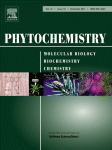Propolis with High Flavonoid Content Collected by Honey Bees from Acacia paradoxa
Honey bees, Apis mellifera var ligustica, on Kangaroo Island, Australia, were found to collect propolis from the sticky exudate on the stem shoots and seed pods of an Australian endemic plant, Acacia paradoxa.
Extracts of the plant stem shoots and seed pods, the propolis carried on the legs of bees and freshly collected propolis in hives contained major flavonoid components consisting of 2',3',4'-trimethoxychalcone, 2'-hydroxy-3',4'-dimethoxychalcone, 2',4'-dihydroxy-3'-methoxychalcone, 5,7-dihydroxy-2,3-dihydroflavonol 3-acetate (pinobanksin 3-acetate) and 5,7-dihydroxy-6-methoxy-2,3-dihydroflavonol 3-acetate, a substance not previously characterized. HPLC and (1)H NMR analyses of the propolis and plant extracts indicated smaller amounts of other flavonoids.
A survey of propolis samples from 47 apiary sites widely distributed on Kangaroo Island showed that 15 samples from 6 sites were largely sourced from A. paradoxa.
